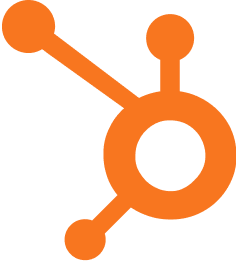Procurement Metrics: Key Performance Indicators

Published on: October 01, 2024
Procurement metrics are quantifiable measurements used to evaluate and monitor the effectiveness, efficiency, and overall performance of an organization's procurement processes. These key performance indicators (KPIs) provide valuable insights into various aspects of the procurement function, helping businesses optimize their purchasing strategies, reduce costs, and improve supplier relationships.
Why Procurement Metrics Matter 📊
In today's competitive business landscape, procurement plays a crucial role in driving organizational success. By tracking and analyzing procurement metrics, companies can:
- Identify areas for improvement in their procurement processes
- Measure the impact of procurement initiatives on the bottom line
- Enhance decision-making through data-driven insights
- Align procurement activities with overall business objectives
- Benchmark performance against industry standards
Key Procurement Metrics to Monitor 🔍
While the specific metrics may vary depending on the organization's goals and industry, some essential procurement metrics include:
1. Cost Savings
This metric measures the total amount saved through procurement activities, such as negotiating better prices or finding alternative suppliers. For more insights on this topic, check out performance metrics.
2. Supplier Performance
Evaluates suppliers based on factors like on-time delivery, quality of goods or services, and responsiveness to issues.
3. Purchase Order Cycle Time
Tracks the time taken from requisition to purchase order creation, helping identify bottlenecks in the procurement process.
4. Procurement ROI
Calculates the return on investment for procurement activities, typically expressed as:
$ROI = \frac{(Cost\ Savings\ +\ Value\ Added) - (Procurement\ Costs)}{Procurement\ Costs} \times 100\%$
5. Spend Under Management
Measures the percentage of total organizational spend that is actively managed by the procurement team. Understanding inventory management metrics can also aid in this analysis.
Creating a Procurement Metrics Dashboard 📈
A well-designed procurement metrics dashboard provides a visual representation of key performance indicators, enabling stakeholders to quickly assess the procurement function's health. Consider including the following elements in your dashboard:
| Metric | Visualization | Update Frequency |
|---|---|---|
| Cost Savings | Bar Chart | Monthly |
| Supplier Performance | Scorecard | Quarterly |
| Purchase Order Cycle Time | Line Graph | Weekly |
| Procurement ROI | Gauge Chart | Quarterly |
| Spend Under Management | Pie Chart | Monthly |
Challenges in Implementing Procurement Metrics ⚠️
While procurement metrics offer numerous benefits, organizations may face challenges in their implementation:
- Data Quality: Ensuring accurate and consistent data collection across various systems
- Metric Selection: Choosing the most relevant metrics aligned with organizational goals
- Change Management: Overcoming resistance to new measurement and reporting processes
- Technology Integration: Implementing systems to automate data collection and reporting
Best Practices for Leveraging Procurement Metrics 🏆
To maximize the value of procurement metrics, consider the following best practices:
- Align metrics with overall business objectives
- Regularly review and update metrics to ensure relevance
- Provide context and benchmarks for each metric
- Use metrics to drive continuous improvement initiatives
- Communicate metric results and insights to stakeholders
By implementing a robust set of procurement metrics and leveraging the insights they provide, organizations can optimize their procurement processes, reduce costs, and drive overall business performance.
Implementing Procurement Metrics in Your Sales or Marketing Stack 🤔
As you consider implementing procurement metrics in your organization, ask yourself the following questions:
- Which procurement metrics are most relevant to our business goals?
- How can we integrate procurement data with our existing sales and marketing systems?
- What tools or technologies do we need to effectively track and analyze procurement metrics?
- How can we use procurement insights to improve our sales and marketing strategies?
- Who are the key stakeholders that need access to procurement metrics, and how can we best present this information to them?
By addressing these questions, you can develop a comprehensive approach to incorporating procurement metrics into your sales and marketing operations, ultimately driving better decision-making and improved business outcomes.
















